Day 16 To Hakodate with a Five Side Fort Visit
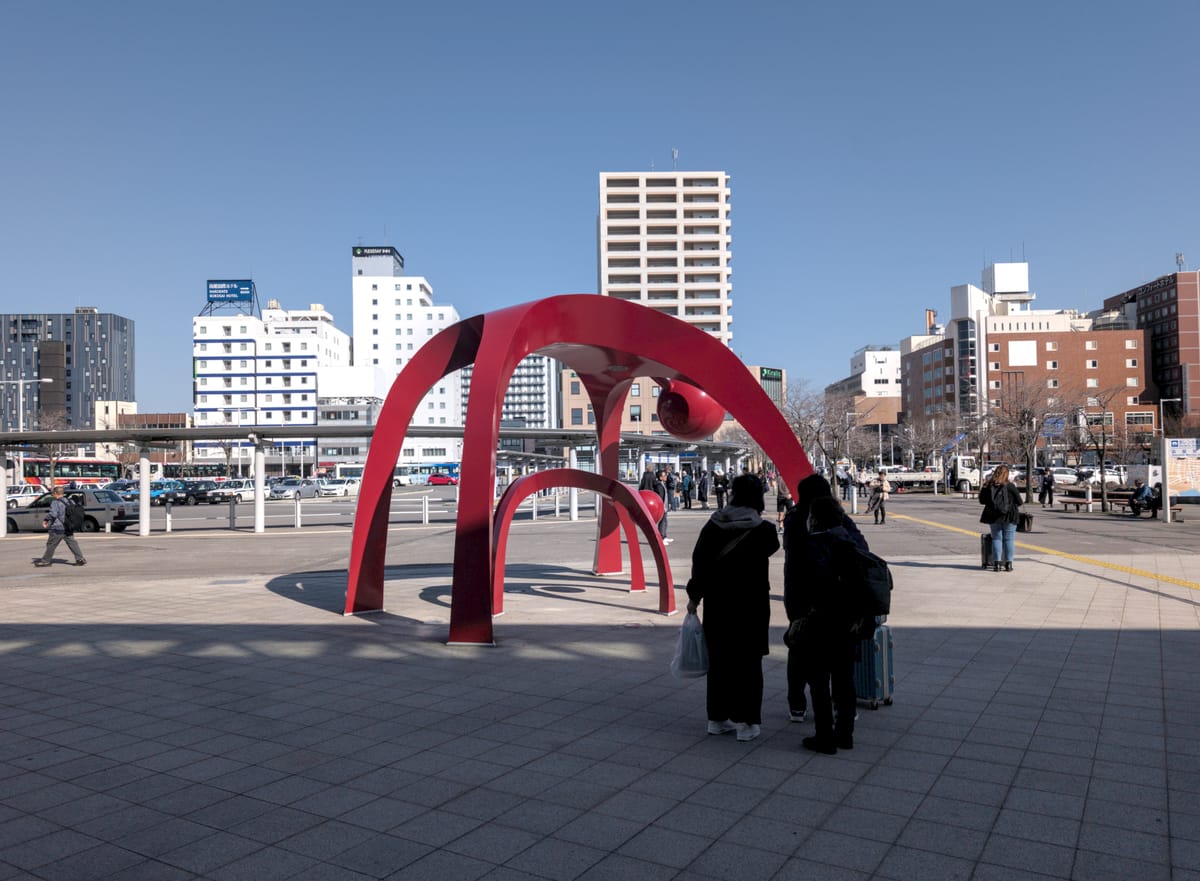
Time to move on from Sapporo to our other Hokkaido destination, Hakodate. Naturally the weather decides to be spectacular - after a week of not seeing sun, it came out with lots of blue...
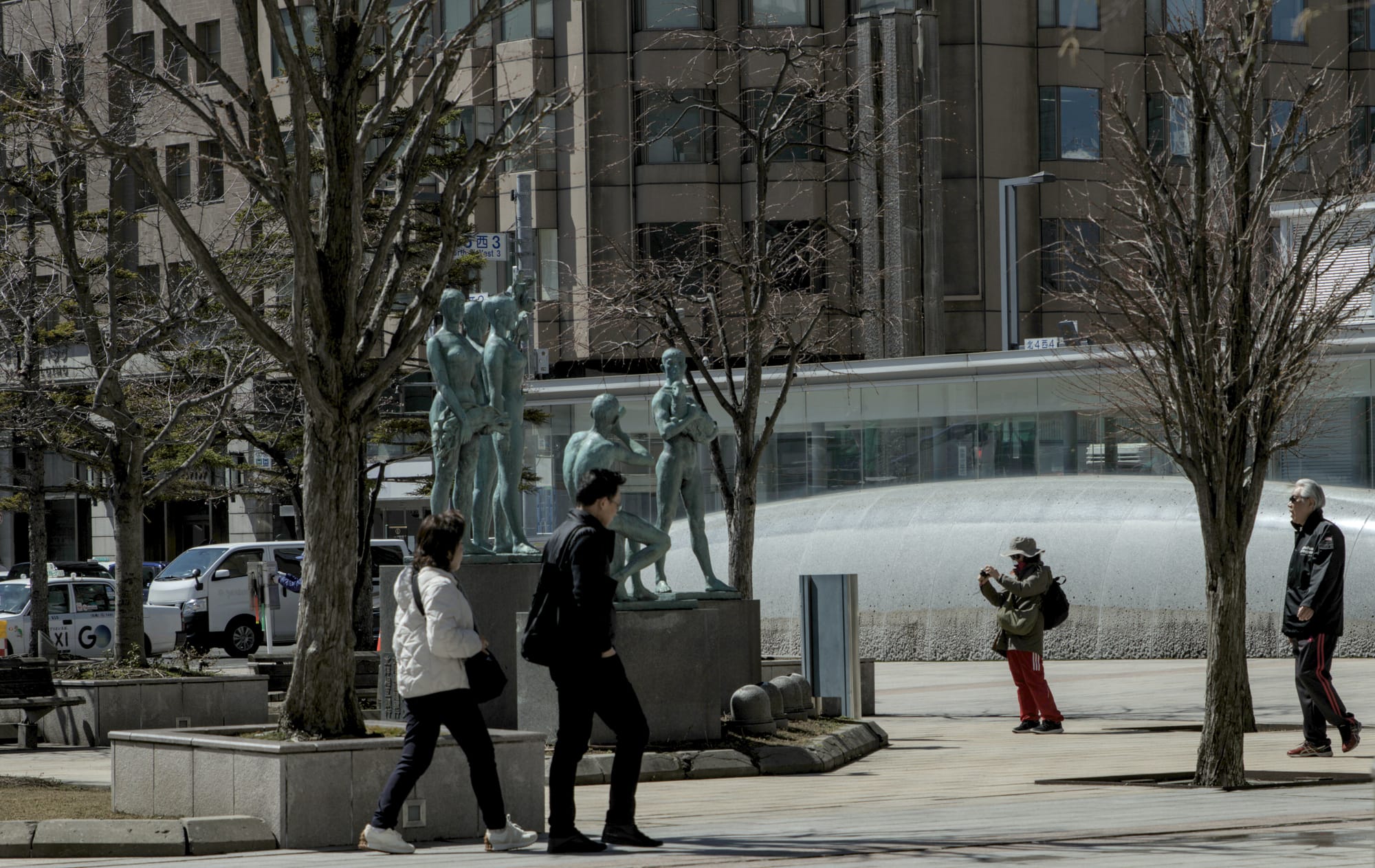
The route to Hakodate follows the Eastern coast of Southern Hokkaido which opens to the North Pacific. The express train takes a little less than 4 hours.
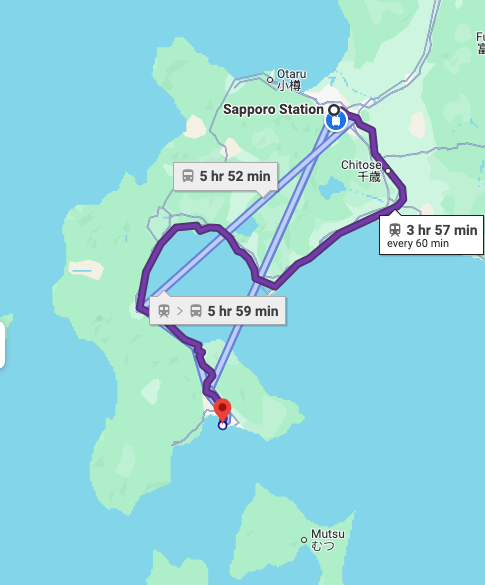
|
Heading to the platform for our train we pass a standard of Japanese train stations, the commuter soba shop. These are one of the things you see everywhere if you take a lot of trains and subways. Riders in need of a quick meal call out an order, get a bowl of noodles, and pay while running to their train, often in the space of 90 seconds. The timing of our trip doesn't quite see that degree of anxiety, but still a reminder by being there. |

|

|
The weather and route hold out the promise of good scenery as we travel our route, and we are not disappointed. Out one side of the train are snow-capped mountains behind the local communities. Unlike the lower islands, Sapporo is not a big rice growing region so we don't see the paddies on other routes. This region grows much of the other crops; corn, potatoes, and dairy big. |
And sometimes we're lucky to get both water and mountains in the window...
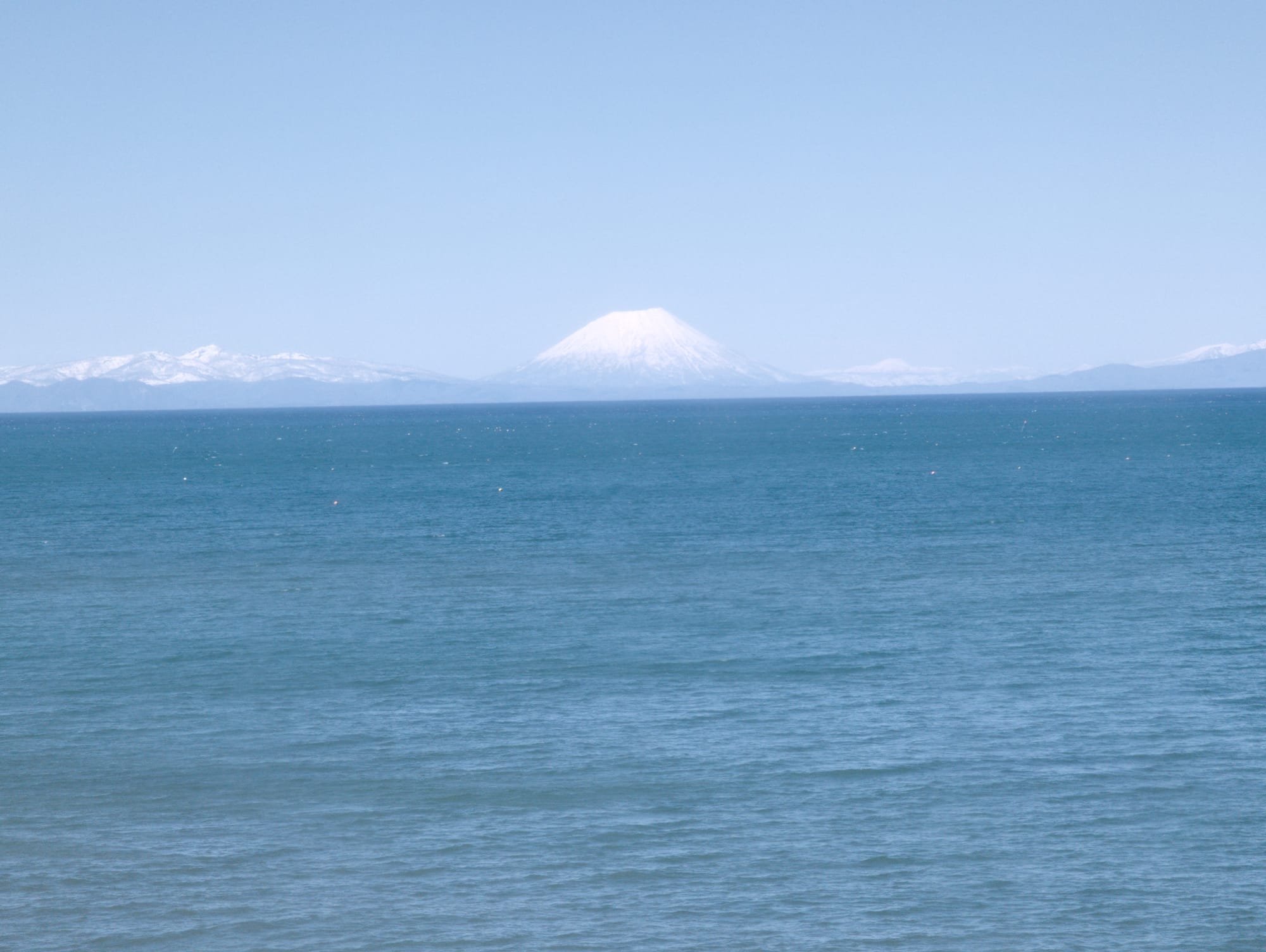
|
Another joy of traveling by rail in Japan is the Ekiben - which literally means Station lunch box. This is a big deal in Japan as the regions show off their local goodies with lunch boxes stuffed with their local specialties. We picked up one (there are often many to chose from) that showed off the local crab and sushi parings along with local veggies. Ahhh... |

|
And so we arrive at Hakodate...
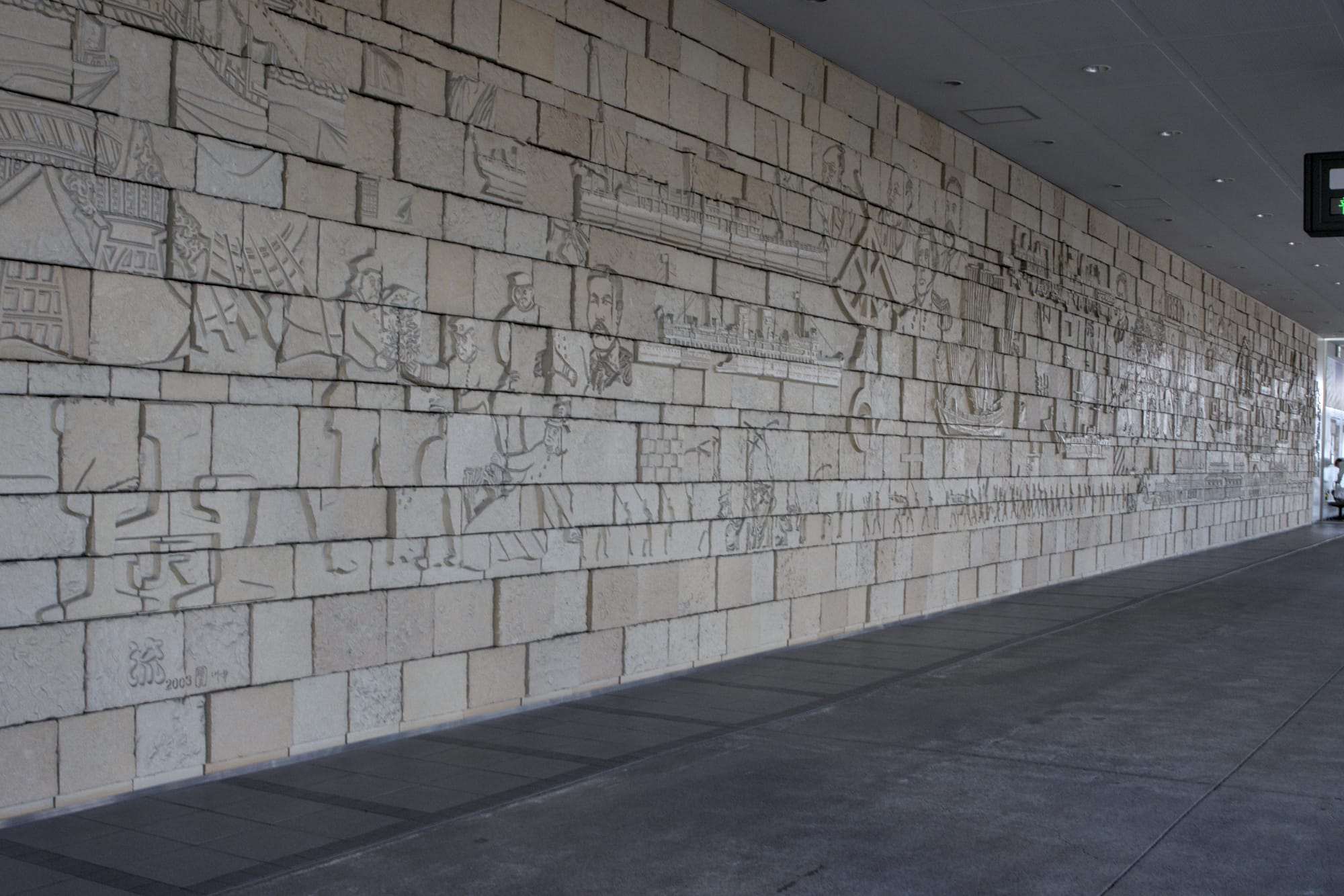
A little history. Hakodate has been an active settlement for the Yamato (the majority of Japanese) since at least the 15th century. It was the site of battles between the migrant trading families from Northern Honshu (the main Japanese island) and the indigenous Ainu; it has only been in recent decades that the Japanese government has recognized harm done to the Ainu and started to make recompense. Flash forward a couple of centuries and the Tokugawa Shogunate when there was a push to increase the Yamato influence for trading purposes. When the American Black Ships started pushing the Shogunate government, Hakodate was one of the first five open treaty ports.
|
This made Hakodate very much a Shogunate stronghold during the Meiji Restoration. A number of Tokugawa loyalists attempted to start a new country - the Republic of Ezo - in Hokkaido with Hakodate as it's main city. One result of this was the creation of Goryokaku, a five-sided fort to protect the magistrates office in an attempt to hold off the Imperial forces. It was the site of one of the final battles of the Boshin War, which took down the remaining Shogunate forces and where we wandered after arriving here. |

|
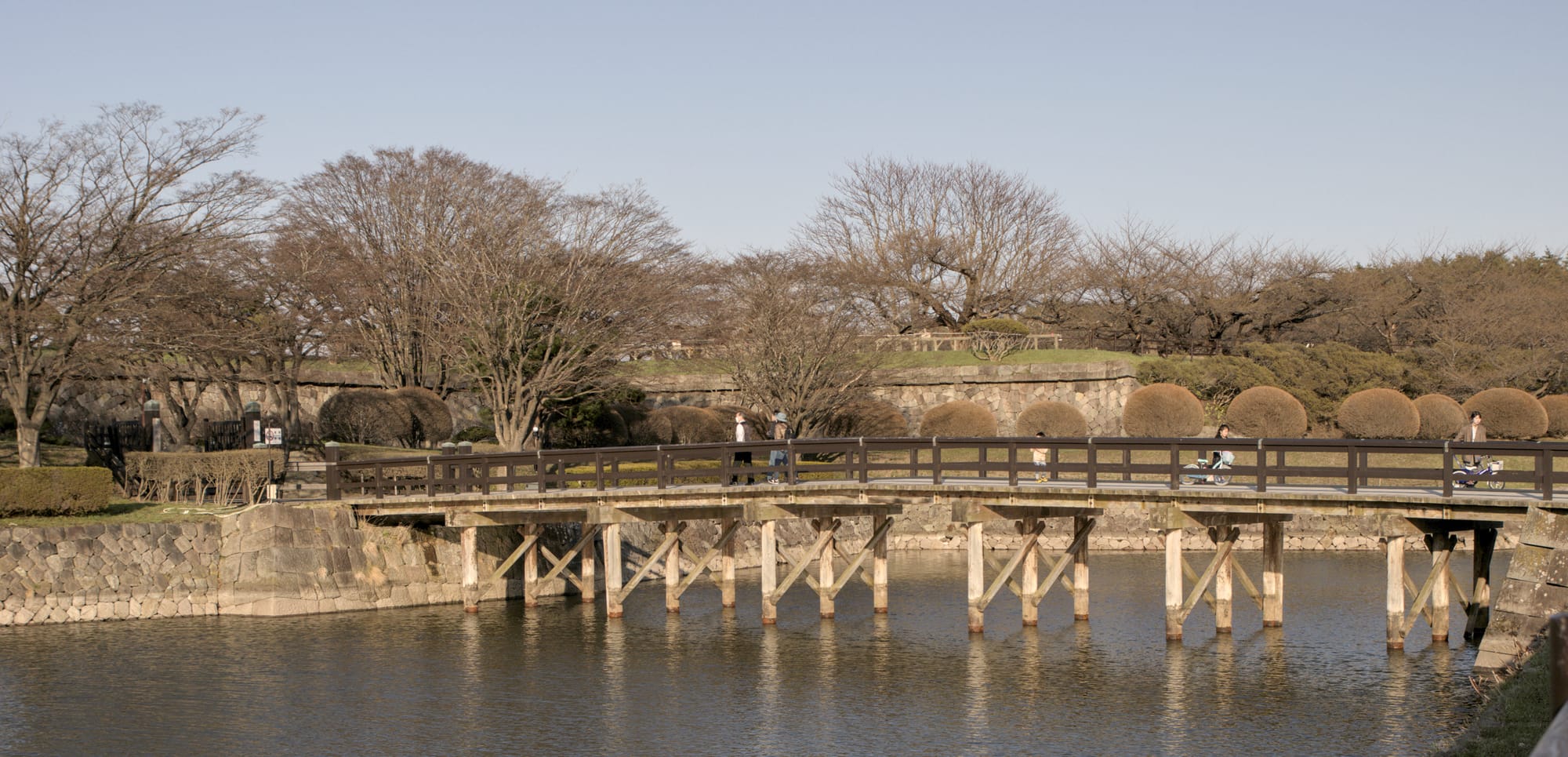
|
After the victory of the Imperial forces, much of the fort was demolished and left to decay. In recent decades the old fort has been restored and become a very walkable park. |

|

|

|
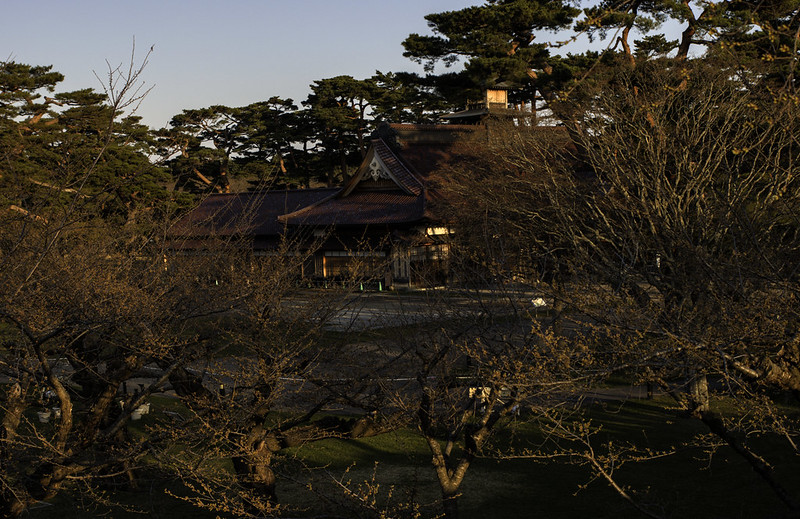
|
In the middle of the park is a reconstruction of the Magistrates office the fort was created to protect. This was the power base for the last Shogunate-related rulers who hoped to survive. The original was torn down in 1872 after the Imperial forces won the Boshin War. The building was reconstructed from the original plans with materials and crafts as close to the original as they could.
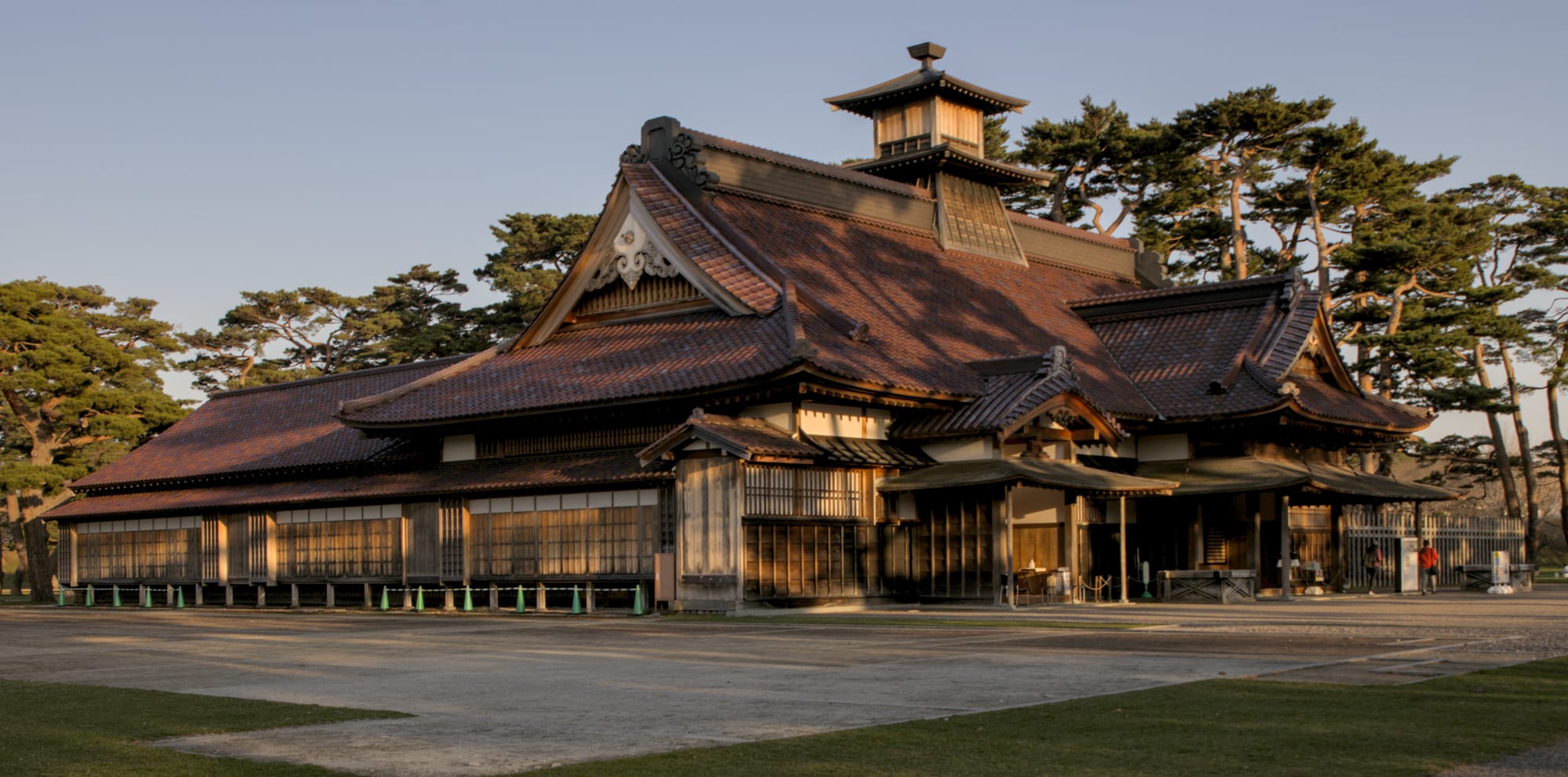
|
The building is now a museum of the Goryokaku with artifacts from the wars, documentation and videos of the site, and a picture of life of the Magistrate - even a full wood WC... (use of which is not encouraged) |

|
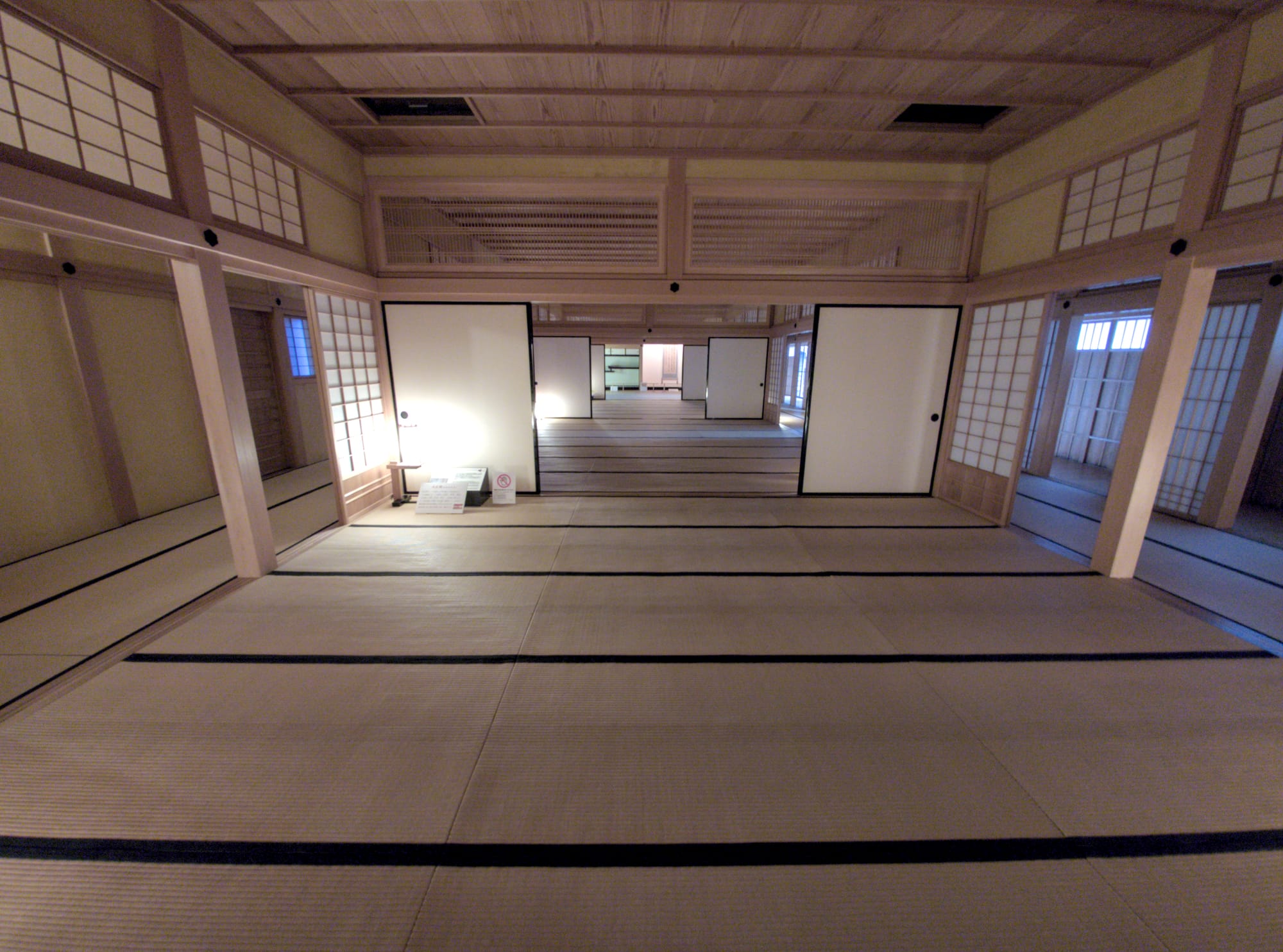

|

|
Since we arrived in Hakodate in the afternoon, it was getting dark when they finally ushered us out of the building, just in time to see a sunset over the Goryokaku moat.
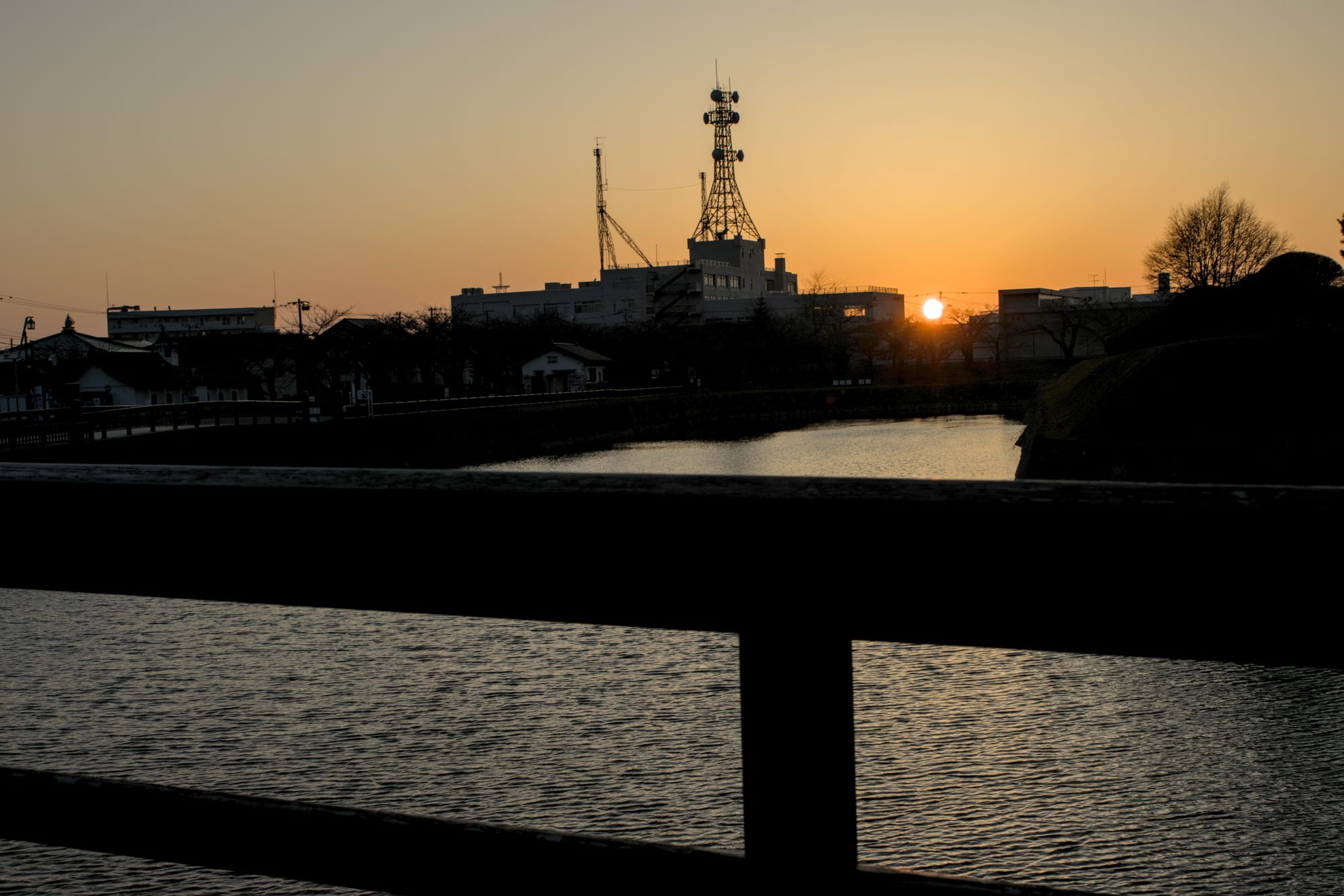

|
Another part of the charm of Hakodate is the main transport in downtown, trolleys. It was especially nice since the stop for the main line was just down the street from our lodging. So, back home after a very nice, sunny day with lots of travel. |
There are a bunch more photos of Goryokaku and scenery out the train window in the Sapporo to Hakodate Gallery.
